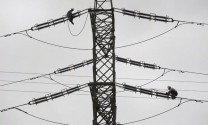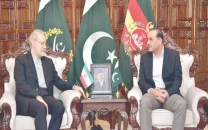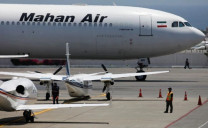A recipe for rapid economic growth
Govt needs to give priority to minimising trade barriers, its footprint on economy

The recent speech by Mian Mohammad Mansha, one of the most successful entrepreneurs of Pakistan, at the Lahore Chamber of Commerce and Industry was indeed a breath of fresh air.
Unlike other industrialists, he did not ask for more protection for our poorly performing industries but asked for removing trade barriers. Similarly, he was not asking for more subsidies but reducing the state’s economic footprint on the economy.
The industrialist’s recipe is very appealing. Such recipes have worked in many other developing countries.
A recent example is Vietnam, which was at the brink of economic collapse in the mid-1980s. A long war with the United States left its economy shattered.
About 70% of its population lived below the poverty line, and inflation was running at 700%. Vietnamese leadership had to find a way to keep its people from mass starvation.
It prioritised two areas for immediate reform: minimising trade barriers and reducing government footprint on the economy through restructuring state-owned enterprises.
Trade policy reforms were relatively more straightforward as, at the time, Vietnam had almost no international trade. The first decision was to move the direction of trade from far-off Eastern European countries to within the region. It, therefore, joined Asean in 1995.
For longer-term trade policy reforms, it applied to become a member of WTO. Over the next 10 years, it undertook extensive legislation and market-oriented reforms to meet the membership requirement.
In the meantime, it started on a rapid path of concluding free trade agreements (FTAs) with all major trading nations such as the US, China, South Korea, Japan, EU, Australia and India. Through its FTAs, it managed to gain preferential access and undertook commitments to reduce its tariff and non-tariff barriers.
Reducing government footprint on the economy was relatively more challenging. As a first step, state-operated enterprises (SOEs) were made independent in the early 1990s by giving them powers of hiring and firing.
Those who failed to run without government’s support were either merged with others or closed down. In this process, some 5,000 state enterprises were either liquidated or merged.
As a result of these reforms, Vietnam’s economy started growing swiftly. In particular, exports started growing at a breakneck speed and have risen from about $5 billion in 1995 to over $330 billion now.
Poverty started declining and is now estimated to be less than 5%. The literacy rate climbed to over 95%.
The above example shows that reducing trade barriers and government footprint on the economy can have very beneficial effects and be implemented in a relatively short term.
But can these be done in a diverse country like Pakistan? Also, it would not be easy to convince those who are major beneficiaries of the current rent-seeking system.
Vietnam reduced tariff and non-tariff trade barriers by having dozens of FTAs. Its trading partners in FTAs now number 56 countries against less than five for Pakistan.
It is not that Pakistan has not made efforts, but every one of them has been stuck for years. For example, negotiations with Turkey have been going on since 2005.
The main reason it is not concluded is that the major Pakistani industries are not in favour. Instead of a bilateral agreement, they ask Turkey to unilaterally extend duty-free access as the EU does under its GSP Plus scheme.
Other than Turkey, Pakistan has been negotiating preferential trade agreements with several other countries such as South Korea, Thailand, Singapore and Gulf states but has not been able to conclude any.
Now the IMF is asking Pakistan to negotiate FTAs with its major markets such as the US, EU and UK to expand its exports.
Still, it is not likely to happen as our business community and the government would rather try seeking unilateral concessions than any FTA where both sides undertake reduction in trade barriers.
Reducing government footprint on the economy would be even more challenging than reducing trade barriers.
According to a recent PIDE research, the government’s footprint on the economy is 67%. Besides the general government expenditure representing 22% of GDP, the government controls 200 state-owned enterprises (SOEs).
It is estimated that the combined losses of these state enterprises amount to Rs1.1 trillion per year. These losses are equivalent to about $6 billion, or the total IMF loan currently being disbursed to Pakistan in biannual tranches.
What is not clear is why the government is holding on to some of these enterprises running in losses for decades? For example, PIA loses about Rs50 billion per year, and AirHelp ranks it as the world’s third worst airline.
Many other airlines, including European and Indian, which were running in losses, have been privatised, although those countries could afford to subsidise them. Why cannot Pakistan follow such examples?
We can only hope that the dream of turning Pakistan towards the path of rapid economic growth will be achieved in our lifetime.
The writer has served as Pakistan’s ambassador to WTO and FAO’s representative to the United Nations at Geneva
Published in The Express Tribune, February 14th, 2022.
Like Business on Facebook, follow @TribuneBiz on Twitter to stay informed and join in the conversation.


















COMMENTS
Comments are moderated and generally will be posted if they are on-topic and not abusive.
For more information, please see our Comments FAQ